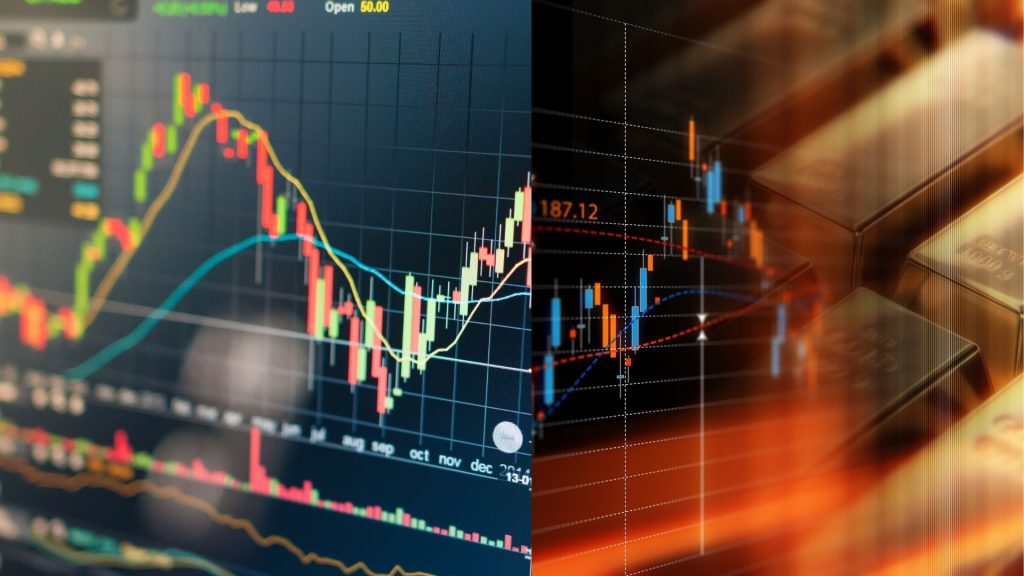Table of Contents
In this comprehensive article, we delve into the difference between stock market and commodity market, providing valuable insights for investors, traders, financial enthusiasts, students, and anyone seeking a deeper understanding of these financial realms.
Difference Between Stock Market and Commodity Market

Source: Institute of Economic Thinking
Stock markets and commodity markets serve different purposes in the financial landscape. Stock markets primarily deal with equities (company ownership shares), while commodity markets focus on tangible assets and raw materials. Let’s explore these differences further!
- Assets Traded
- Stock Markets
Stock markets predominantly involve the trading of stocks or equities, which represent ownership in publicly listed companies.
According to Investopedia, stock trading provides investors with partial ownership of a company and allows them to participate in its success.
- Commodity Markets
As per CME Group, commodity markets deal with physical goods and raw materials, such as agricultural products, energy resources, and metals.
These markets are vital for determining fair market values for essential goods and facilitating supply chains.
- Trading Mechanisms
- Stock Markets
Common stock trading in stock markets typically involves buying and selling shares of publicly traded companies.
This process occurs on stock exchanges, through brokerage accounts, and electronic trading platforms. Stock ownership grants shareholders certain rights and responsibilities.
- Commodity Markets
Commodity markets utilize diverse trading mechanisms, including spot and futures contracts. According to The Balance, these contracts allow for immediate or future delivery of commodities. Commodity trading is global and involves commodity exchanges.
- Risk Factors
- Stock Markets
Stock markets are influenced by price volatility, market sentiment, and broader economic trends. Market forces, investor sentiment, and company performance can affect stock prices. Strategies for managing stock market risk include diversification and stop-loss orders.
- Commodity Markets
Commodity markets face unique risk factors, including supply and demand dynamics, geopolitical events, and global economic conditions. Managing risk in commodity trading involves using tools like futures contracts to hedge against price fluctuations.
- Monitoring and Assessment
- Stock Markets
Key performance indicators and indices are crucial in monitoring stock market performance. NASDAQ provides data on major indices like the S&P 500, Dow Jones Industrial Average, and NASDAQ, which gauge the health of publicly traded companies.
- Commodity Markets
Commodity markets rely on specific indicators to assess the performance of various commodity sectors. Understanding benchmarks like the CRB Index is essential for monitoring the performance of different commodity markets, as detailed by Bloomberg.
In summary, the differences between stock market and commodity market are significant and rooted in their distinct assets, trading mechanisms, and risk factors. These distinctions are crucial for investors and traders seeking to navigate these financial realms effectively.
Comparing Key Indicators Between Stock Market and Commodity Market

Source: Pexels
Understanding the key indicators and indices used in stock and commodity markets is essential for assessing their performance.
Stock Markets
- S&P 500
The Standard & Poor’s 500 Index, commonly known as the S&P 500, is one of the most widely followed equity indices.
It includes 500 of the largest publicly traded companies in the United States, covering a broad spectrum of industries. The S&P 500 is considered a key indicator of the overall health of the U.S. stock market.
- Dow Jones Industrial Average
Often referred to as the Dow, this index consists of 30 large, publicly traded U.S. companies.
It’s one of the oldest and most recognizable indices, tracking the performance of companies across various sectors.
- NASDAQ Composite
The NASDAQ Composite Index is known for its technology-heavy composition. It includes thousands of companies, many of which are tech-related. This index is often used to gauge the performance of technology and internet-based companies.
Commodity Markets
- Commodity Research Bureau (CRB) Index
The CRB Index is a comprehensive benchmark that tracks the price movements of a basket of commodities. It includes a variety of commodities, making it a valuable indicator for assessing overall commodity market performance.
- WTI Crude Oil
The West Texas Intermediate (WTI) Crude Oil price is a crucial indicator for the energy sector. WTI represents a significant portion of the world’s oil production and is a benchmark for oil prices.
- Gold Price
Gold is one of the most actively traded commodities, and its price is closely monitored by investors worldwide. The price of gold often reflects economic uncertainties and serves as a safe-haven asset.
The Role Each Market Plays in the Financial World

Source: Pexels
After you know about the difference between stock market and commodity market, here’s the role of each market that playing a vital roles in the global financial ecosystem.
Stock Markets
- Capital Formation
Stock markets are primary platforms for companies to raise capital. By issuing shares to the public, businesses can fund their operations, invest in growth, and expand their activities.
- Investment Opportunities
Stock markets offer individuals and institutional investors various investment opportunities. By purchasing shares, investors can participate in the growth and profitability of companies.
- Corporate Governance
Stock markets promote corporate governance by granting shareholders the right to vote on key company decisions. This democratic process enhances transparency and accountability.
Commodity Markets
- Price Discovery
Commodity markets serve as essential tools for price discovery. They provide transparent pricing mechanisms for various commodities, allowing producers and consumers to make informed decisions.
- Risk Management
Commodity markets enable businesses to manage price risk. Using futures contracts, companies can lock in prices for future deliveries, safeguarding themselves against adverse price movements.
- Global Supply Chains
Commodity markets facilitate the flow of essential goods in the global supply chain. They ensure that producers can sell their products to consumers efficiently.
In conclusion, stock and commodity markets are distinctive in their assets, trading mechanisms, and functions. While stock markets focus on company ownership shares, commodity markets deal with physical goods and raw materials.
Understanding the difference between stock market and commodity market is essential for investors, traders, and anyone interested in the financial world. Both markets are integral to the global economy and provide unique financial growth and risk management opportunities.
By comprehending their roles and the factors that affect them, you can make more informed investment and trading decisions in these dynamic and interconnected markets.
Ready to Explore Opportunities? Connect with Hi-Fella!
Are you looking to tap into the dynamic world of global trade, seeking opportunities in manufacturing, and connecting with suppliers and buyers worldwide?
Hi-Fella, a leading B2B marketplace, is here to facilitate your journey. Join us to access thousands of manufacturers, suppliers, and potential buyers, all in one convenient platform. Take the next step towards your business goals and explore commodities market with Hi-Fella!








